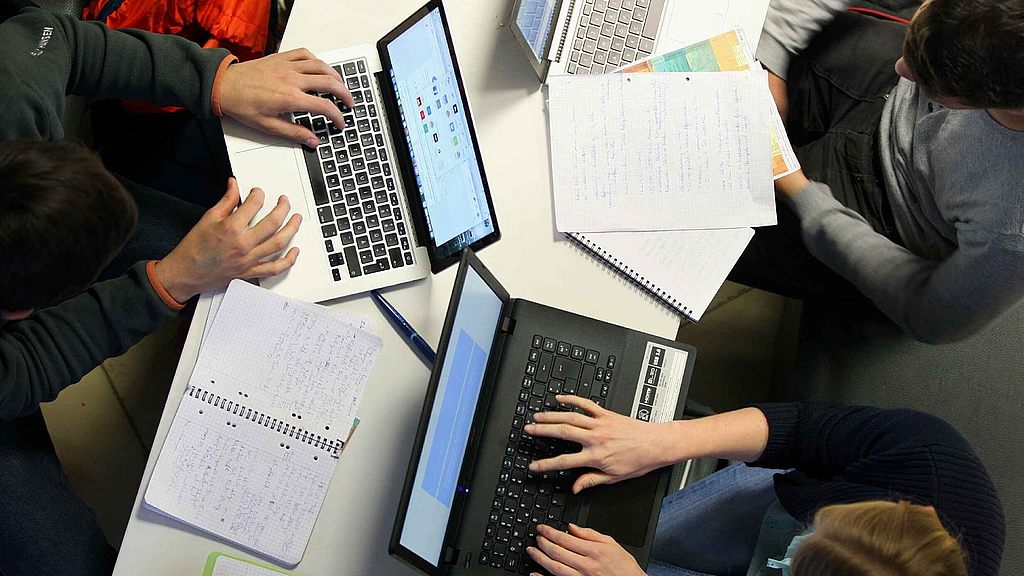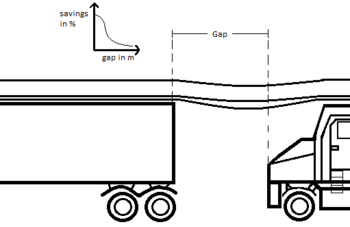Energy-efficient Vehicle Platooning
Vehicles driving with a short inter-vehicle distance can benefit from reduced wind drag. Thus vehicles would need less energy and therefore less fuel to keep the same speed. This method can furthermore reduce CO_2 emissions and has various additional advantages, such as a bigger utilization of streets, increased safety, and general cost savings. For practical applications, many safety concerns have to be met and still some technologies have to be integrated into a driving fleet, to take advantage of the underlying method of saving fuel in real-world applications.
The vehicle platooning problem copes with the optimal routing of heavy-duty vehicles within a road-network, so that the overall minimal fuel consumption can be identified, and the vehicle can drive those paths. The focus of our research for vehicle platooning is on the routing problem, which can have different variants regarding the constraints and the objective of the problem, e.g. homogenous or heterogenous vehicles, time constraints, single- and multi-objective objective functions, duration constraints for drivers, waiting constraints and more.
With the integration of new technologies, algorithms, and heuristics we developed a framework for solving the NP-Complete routing problem. Given a network representing a real-world street network, vehicles are to drive between any two nodes in this graph. Geographically based methods calculate values, which represent the incentive of two vehicles to drive together. Different grouping heuristics can assign the vehicle – based on those values – into smaller groups to efficiently solve them and calculate near-optimal paths. Technologies such as graph databases are integrated with the process and are used as interfaces for the different steps of the framework. Finally, solutions and important values are stored in an RDBMS and visualized through tools for interpreting meaningful results.




